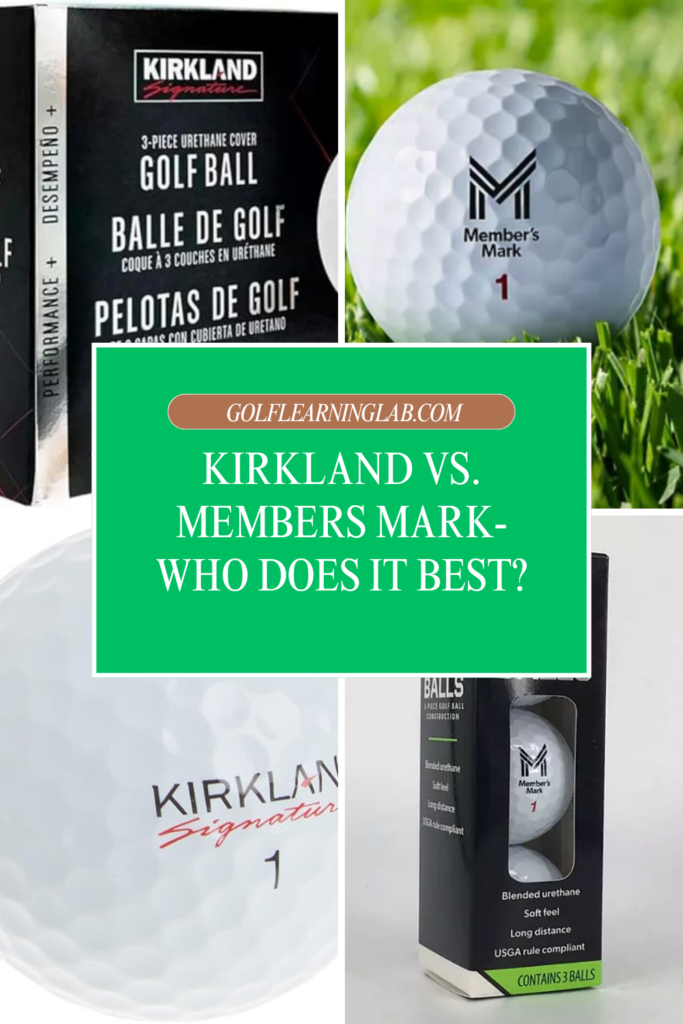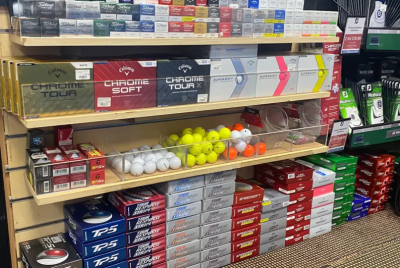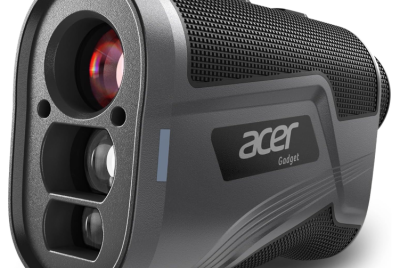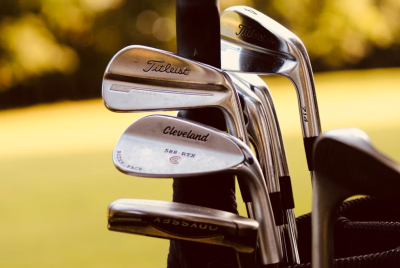Kirkland Golf Balls vs. Members Mark: Which is Best?
As an avid player who’s always on the hunt for equipment that delivers great performance without breaking the bank- (believe me, I’m cheap!) I’ve been thoroughly intrigued by the rise of grocery store golf balls. Today, I’m diving into a detailed comparison of two popular options that have been generating significant buzz in the golfing community: the new Members Mark golf balls from Sam’s Club and the now-legendary Kirkland Signature golf balls from Costco.
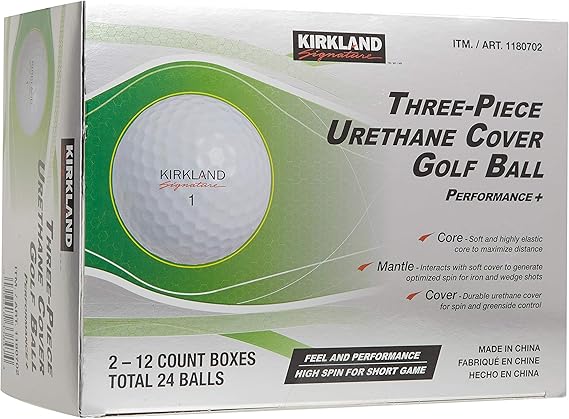
Having tested both extensively over multiple rounds, I’m excited to share my findings to help you decide which might work better for your game. Let’s tee off with this comparison and see which ball offers the best bang for your buck!
Gone are the days when premium performance in golf balls was exclusively reserved for those willing to shell out $45+ per dozen. Take it from me- there is just nothing quite like the feeling of hitting a $4 golf ball into the woods- and it just being one of those deals like “I’ll never see that again”. You know it the moment it leaves the club face! But, the warehouse club revolution has changed the game, quite literally, for players across the country.
If you read our earlier article about Kirkland Signature golf balls and how you can buy great golf balls at the grocery store, you’ll know that I’ve been a fan of these budget-friendly alternatives for years. The concept is simple but powerful: leverage massive purchasing power to create quality products at significantly lower prices.
Both Sam’s Club and Costco have entered this market with impressive offerings that challenge the notion that you need to spend big to play well. But how do these specific balls stack up against each other?
Members Mark Golf Balls: An In-Depth Look
Construction and Technology
The new Members Mark golf balls represent Sam’s Club’s serious attempt to capture market share in the budget golf ball category. These balls feature a three-piece construction, which immediately places them in a more performance-oriented category than basic two-piece distance balls.
The core is designed to produce low spin off the driver while maintaining energy transfer for distance. The mantle layer helps moderate spin rates for different clubs, while the urethane cover—yes, genuine urethane—provides that soft feel and control around the greens that better players typically demand.
What surprised me most was the attention to detail in the dimple pattern. The 338-dimple design is engineered to provide a stable, penetrating ball flight even in windy conditions, something I certainly noticed during my testing rounds.
Performance Characteristics
Out on the course, the Members Mark balls displayed impressive versatility. Off the tee, I found them to be long enough to compete with many mid-tier balls from major manufacturers. They launch at a medium-high trajectory that should suit a wide range of swing speeds.
The real test for any urethane-covered ball comes around the greens, and I was pleasantly surprised by the stopping power these balls provided. On approach shots, they checked up nicely on firmer greens, and I could produce reliable spin on shorter chips and pitches.
One area where I noticed a slight compromise was in the consistency from ball to ball. While most performed admirably, I did experience a few that seemed to fly differently than others in the same dozen. This isn’t entirely unexpected at this price point but is worth noting.
Price Point and Value
Here’s where the Members Mark balls make their strongest case. At roughly $27-29 for two dozen you’re looking at about $14 per dozen—significantly less than premium offerings from big names like Titleist, Callaway, or TaylorMade– jeez I wish I had a deal with Sam’s to sell some of these!
When you consider that these are genuine urethane-covered, three-piece golf balls, the value proposition becomes even more attractive. You’re essentially getting technology and materials that would typically cost $35-45 per dozen for less than half that price.
Kirkland Signature Golf Balls: The Popular Alternative
Construction and Design
Costco’s Kirkland Signature golf balls have achieved almost legendary status among budget-conscious golfers. The current iteration features a four-piece construction with a dual-core design, a mantle layer, and a urethane cover.
This complex construction aims to deliver performance across all aspects of the game. The dual-core technology helps create the ideal combination of distance off the tee and feel on shorter shots. The 338-dimple pattern (interestingly, the same number as the Members Mark) provides a consistent, stable flight.
What stands out most about the Kirkland balls is how closely they seem to mirror the design philosophy of premium tour-level balls. They’re clearly built to compete with the best, not just to provide a “good enough” alternative.
On-Course Performance
My experience with the Kirkland balls has consistently impressed me, particularly with their distance. They’re long off the tee, with a satisfying feel at impact that doesn’t scream “budget ball” in any way.
Where the Kirklands really shine is in their consistency. Ball after ball performs nearly identically, which builds confidence when you’re standing over crucial shots. The spin rates with wedges are excellent, allowing for those delicate shots around the green that can save crucial strokes.
I’ve particularly enjoyed the way these balls perform in windy conditions. The flight is penetrating without sacrificing too much carry, which has saved me on several breezy rounds where others were struggling with ballooning shots.
Cost-Effectiveness
The Kirkland value proposition remains one of the strongest in golf. At approximately $24.99 for two dozen (again, prices may vary slightly), you’re paying about $12.50 per dozen for a four-piece, urethane-covered golf ball that performs like models costing three times as much.
This exceptional value is a primary reason why these balls frequently sell out and have developed such a devoted following. When you can purchase tour-level performance at budget prices, it’s hard to justify spending more unless you have very specific needs.

Head-to-Head Comparison
Distance and Accuracy
When comparing these balls directly, I found that the Kirkland balls generally provided 3-5 yards more distance off the tee with my driver. This wasn’t universal across all clubs, but with longer clubs, the Kirkland had a slight but noticeable edge.
In terms of accuracy, both balls performed admirably. I didn’t notice significantly more dispersion with either ball, though I found the Members Mark slightly more forgiving on mishits. The difference wasn’t dramatic, but enough that higher-handicap players might appreciate the extra forgiveness.
Feel and Control
Around the greens, both balls offer impressive performance, but with different characteristics. The Members Mark provides a slightly softer feel on chips and putts, which some players might prefer. The Kirkland has a somewhat firmer sensation but offers excellent feedback.
When it comes to spin control with wedges, the Kirkland edges ahead slightly. I could consistently generate a bit more spin on partial wedge shots and bunker play, which translated to better stopping power on quick greens.
Durability
This category shows some meaningful differences. After multiple rounds, the Kirkland balls maintained their cover integrity better than the Members Mark. Several of the Members Mark balls showed scuffing after just one round, particularly after tree hits or cart path encounters.
While neither ball is as durable as a ionomer-covered distance ball (as expected with urethane covers), the Kirkland demonstrated superior resilience over multiple rounds of play, which adds to their value proposition.
Overall Value
When considering pure performance-per-dollar, both offerings provide exceptional value compared to premium brand-name balls. However, the Kirkland’s slightly lower price point, better durability, and marginally better performance give it a slight edge in the overall value category.
That said, if Sam’s Club is more convenient for you than Costco, or if you prefer the slightly softer feel of the Members Mark, the small difference in value may not be significant enough to warrant going out of your way.
Who Should Use These Balls?
Ideal Player Profile for Members Mark
The Members Mark golf balls are particularly well-suited for mid-to-high handicappers who want tour-type feel without tour-level prices. If you’re a golfer who values softness around the greens and a slightly more forgiving ball flight, these could be your perfect match.
Players with moderate swing speeds (85-95 mph with driver) will likely extract the most performance from these balls, as they provide a good balance of distance and control for this range. If you typically lose multiple balls per round, the slightly lower price point compared to premium options makes these far more palatable.
AND- I am just going to say it out loud- I am an amateur- and will always be an amateur- and frankly, I have a hard time spending the extra money for such a negligible difference! There- I said it!
Perfect Fit for Kirkland
Kirkland balls tend to favor slightly more skilled players who can take advantage of their performance characteristics. If you have a mid-to-high swing speed and value distance while still demanding control around the greens, these are tough to beat.
Golfers who play frequently and are looking to maximize their equipment budget without sacrificing performance will find tremendous value here. The Kirkland balls are also excellent for players who compete occasionally but don’t want to break the bank on premium balls for every round.
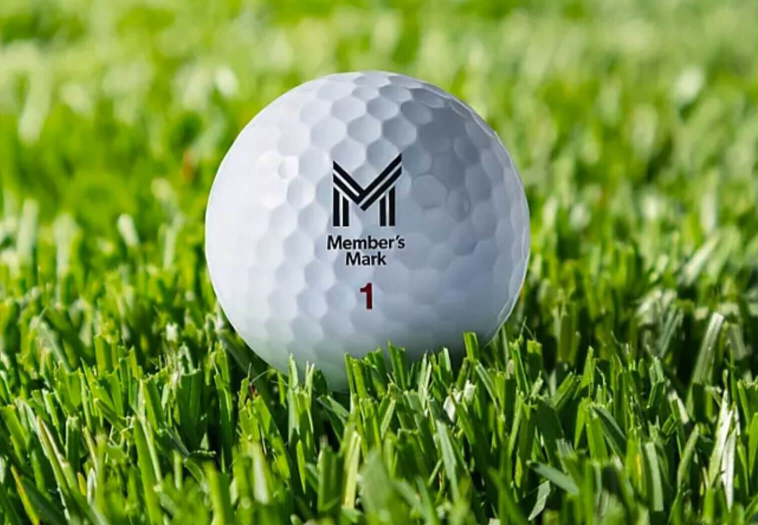
Listen, after extensive testing of both the Members Mark and Kirkland Signature golf balls, I’ve come away impressed with how far warehouse club golf balls have come. Both options deliver performance that would have cost two to three times as much just a few years ago.
If pushed to choose a winner, I’d give a slight edge to the Kirkland Signature balls based on their four-piece construction, superior durability, and marginally better overall performance. However, the Members Mark balls are by no means a distant second—they’re impressive in their own right and represent tremendous value.
The beauty of today’s golf equipment market is that recreational golfers have more great options than ever before. Whether you shop at Sam’s Club or Costco (or both), you can now purchase genuinely high-performing golf balls at prices that won’t make you cringe when you slice one into the water.
My suggestion? Try a box of each and see which suits your game better. At these prices, the experiment won’t set you back much, and you might discover your perfect ball match in the process. The performance differences, while present, are subtle enough that personal preference and individual swing characteristics will ultimately determine which is best for your game.
The days of needing to spend $45+ per dozen to get quality performance are clearly behind us. Whether you choose Members Mark or Kirkland, you’re getting remarkable value that would have been unthinkable in the golf equipment market of a decade ago.
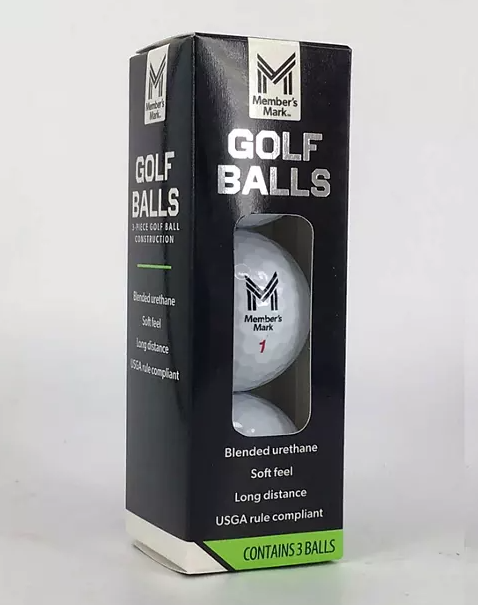
Frequently Asked Questions
1. Are Members Mark and Kirkland golf balls legal for tournament play? Yes, both the Members Mark and Kirkland Signature golf balls conform to USGA and R&A rules and are completely legal for tournament play at all levels. They appear on the conforming ball lists published by both governing bodies.
2. How do these warehouse golf balls compare to premium brands like Titleist Pro V1? While there are performance differences, they’re smaller than the price difference would suggest. Both balls offer 80-90% of the performance of premium tour balls at roughly 30-40% of the cost. The biggest differences tend to be in consistency and durability rather than peak performance.
3. Can high swing speed players use Members Mark or Kirkland balls effectively? Yes, players with swing speeds over 105 mph can absolutely use these balls effectively. The Kirkland may be slightly better for very high swing speeds due to its four-piece construction, but both balls can handle faster swingers without significant performance loss.
4. How often are these balls available, given their popularity? Availability varies by location. Kirkland balls have historically faced inventory challenges due to their popularity, often selling out quickly after restocking. Members Mark balls seem to maintain more consistent availability at most Sam’s Club locations and online.
5. Do professional golfers ever use these warehouse brand golf balls? While most pros have equipment contracts that prevent them from using these specific balls in competition, several teaching professionals and club pros have privately acknowledged using and recommending both Kirkland and Members Mark balls. Some professionals without ball contracts have been known to practice with these balls due to their excellent value and performance.
